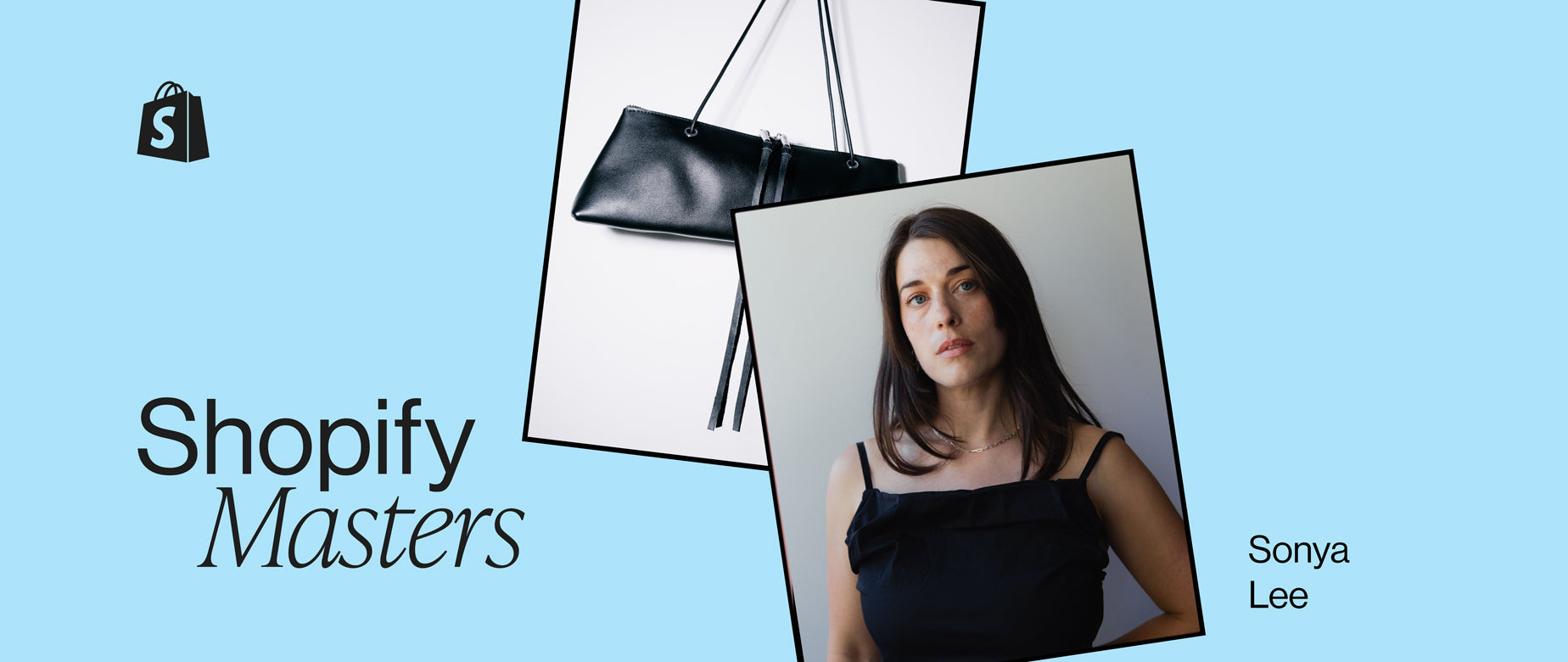Fashion entrepreneur Stephanie Ibbitson shares how writing a solid business plan transformed her struggling handbag brand into a profitable company.
Start your online business today.
For free.
For eight years, I was working alone as an entrepreneur, making a few handbags a month and barely scraping by. Sonya Lee, my line of leather accessories, was making all my life decisions for me. I was living in Vancouver while my family was in Toronto, and I couldn’t afford to visit them. Not having financial stability for eight years was not the highlight of my life.
The breaking point came during a conversation with my husband. We talked honestly about how the business wasn’t making money. I think that’s what pushed me to realize: I needed to figure out how to make a change.
I knew I needed capital to grow beyond making a few pieces per month, so I decided to create a comprehensive business plan. That plan became my ticket to securing a loan from Vancity credit union—funding that would transform Sonya Lee from a struggling passion project into a thriving handbag brand that’s nearly doubled year over year.
When I started writing my business plan, I had to answer a question I’d been avoiding: What made Sonya Lee different from every other handbag brand?
The answer changed everything. I wasn’t just making leather goods—I was filling a massive gap in the market. Many customers who couldn’t afford high-end luxury brands still wanted pieces that were more than fast fashion. They wanted quality, durability, and style at an accessible price point—they wanted affordable luxury. They also wanted transparency about where their handbags were made and to support local production.
I realized there was a lot in the high-end market and a lot in the lower end, but there wasn’t much in the affordable luxury space. Once I could articulate this gap clearly in my business plan, everything else fell into place. I knew exactly what I was doing and why it mattered.
Here’s the thing about fashion—banks and lenders typically don’t invest in our industry, because it’s so risky. Without rock-solid financial projections, I would have been just another fashion entrepreneur with big dreams and no proof I could deliver.
My business plan forced me to understand my costs, margins, and growth potential in ways I never had before. I included everything: production costs per handbag, marketing budget requirements, projected sales based on real market data, and detailed break-even analysis.
The loan manager reviewed my plan and told me something I’ll never forget. He said even though they usually don’t invest in fashion, it seemed like I had a really solid plan. That’s when I knew my numbers weren’t just figures on a page—they were proof that Sonya Lee was a viable business, not just a creative outlet.
One of the biggest revelations in writing my business plan was truly understanding where my customers were and how to reach them efficiently. But it wasn’t just about marketing—it was about every operational decision that would affect my ability to serve them.
I learned to think strategically about inventory management. For instance, focusing primarily on black leather allowed me to manage inventory better while still creating diverse designs. This kind of operational thinking extended to sourcing decisions and production methods that would keep quality high while managing costs.
Understanding where my customers consumed media was equally important. The business plan forced me to be specific about which channels would work for my particular audience. Once I had the loan, I could invest in marketing strategically instead of hoping people would stumble across my work.
A post shared by SONYA LEE BAGS (@sonyalee_official)
I’ve been a very independent person my entire life. But when it came time to create my business plan, I realized I had to completely change my approach. I needed to swallow my pride and reach out to everybody I knew who could potentially help.
I reached out to people with financial expertise, others who understood the fashion industry, and anyone who could provide insights into the market landscape.
The business plan you create in isolation will never be as strong as one informed by diverse perspectives. Those conversations helped me understand aspects of the business I’d been blind to. They challenged my assumptions and strengthened my projections. Most importantly, they gave me the confidence that my plan was solid enough to present to lenders.
The business plan taught me to think beyond survival mode. I needed to create a business that could grow sustainably—one that would eventually fit into my life rather than consuming it entirely.
This meant building in realistic timelines, understanding seasonal fluctuations in the handbag market, and creating systems that didn’t require me to be present for every decision. It meant being transparent with customers about our production process and values, which built trust and loyalty. Within 10 months of getting the loan, I’d hired three people. We were almost doubling year over year because we had systems that could handle the growth.
A post shared by SONYA LEE BAGS (@sonyalee_official)
Today, I can take maternity leave and trust my team to keep everything running. That kind of stability started with planning for sustainable growth.
If I was going to do it again, I would probably not go through the turmoil of eight years without financial stability, but maybe that’s how I was able to reach profitability—I had all those years of knowledge and I was able to use that to make my business into something great. But I wouldn’t recommend that path to anyone.
Write the business plan first. Understand your market, your customers, your finances, and your growth strategy before you quit your day job. Consider learning the industry by working for another brand if you can. Build a financial runway.
A business plan isn’t just paperwork you need for a loan—it’s your road map from passion project to profitable business. Catch Stephanie’s full interview on Shopify Master’s YouTube channel for more inspiring business tips.
The newsletter for entrepreneurs
Join millions of self-starters in getting business resources, tips, and inspiring stories in your inbox.
Unsubscribe anytime. By entering your email, you agree to receive marketing emails from Shopify. By proceeding, you agree to the Terms and Conditions and Privacy Policy.
The point of sale for every sale.
Unsubscribe anytime. By entering your email, you agree to receive marketing emails from Shopify. By proceeding, you agree to the Terms and Conditions and Privacy Policy.
Learn on the go. Try Shopify for free, and explore all the tools you need to start, run, and grow your business.
Start free then enjoy 3 months for $1/month



Leave a Comment